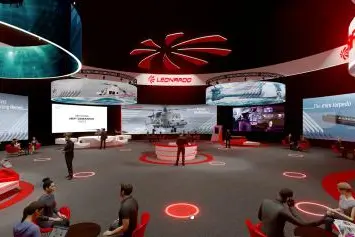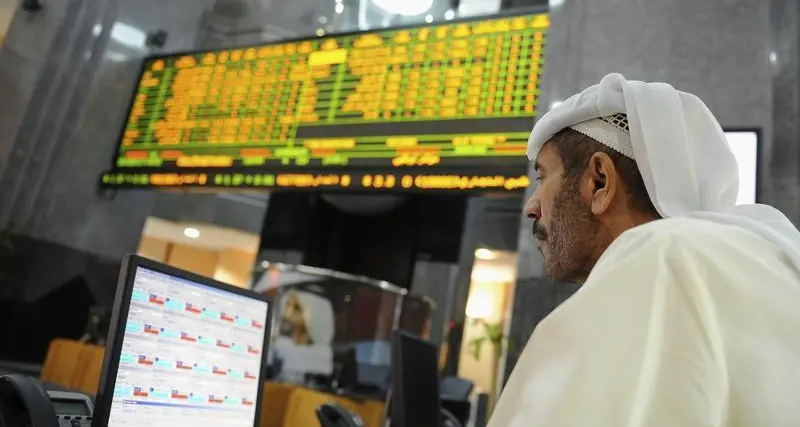PHOTO
- From the integration of new generation Combat Systems to the supply of Naval helicopters, Leonardo’s solutions are the foundation of advanced Navies worldwide
- The exhibition is virtually set in the Middle East, where maritime security is key and Leonardo’s platforms and technologies are operationally-proven on board of more than 30 vessels
Rome, 2nd July 2020 – Starting on 6th of July, the Italian-headquartered defence and security multinational company, Leonardo launches its first virtual exhibition, which aims to maintain the company’s marketing focus of its products and platforms in spite of the physical distance due to the Covid-19 pandemic. The event, based on a dedicated online platform and named “Leonardo Naval Defence for the Middle East. A virtual experience”, comes as the Company’s first commercial-dedicated activity since the worldwide lockdown, when Leonardo – without stopping its production – promptly implemented action to ensure the health and safety of its employees and undertook a series of solidarity initiatives to support the efforts made by governments and emergency responders against the pandemic emergency.
In the last 50 years, more than 40 marine organisations around the world have chosen Leonardo technology to equip more than 100 naval vessels. Leonardo’s solutions include new generation Combat Systems, advanced naval guns and avionics, underwater technologies and multipurpose naval helicopters. The virtual stand will provide a digital version of Leonardo’s portfolio of capabilities for naval defence featuring high-definition 3D models and videos, overcoming physical and temporal limits thanks to new opportunities offered by the digitalisation. An interactive display of a ship’s bridge will present Leonardo’s ‘naval cockpit’, where visitors will be able to learn about the capabilities of a fully-integrated naval operations and combat system, including Leonardo’s small, medium and large-calibre naval guns (from 12.7 to 127mm), DART guided ammunition, protecting against missiles and highly-manoeuvrable targets, and the Vulcano family, a 76mm and 127mm precision ammunition that can accurately hit targets as far as 100 kilometres away.
Underwater technologies featured include the ULISSES (Ultra-LIght SonicS Enhanced System) integrated acoustic sensor system which incorporates ‘multistatic’ functionality, designed to ‘listen’ for hostile submarines and determine their locations, and the Black Scorpion mini torpedo (only 5”), designed to support the contact classification process with minimum cost and maximum flexibility and effectiveness.
Leonardo boasts a leadership role in the naval helicopters sector, thanks to the widest and most modern range of products available on the market today; including, the AW101 three -engine medium-heavy helicopter, the medium twin-engine NH90 NFH (under the NHI consortium) and the intermediate twin-engine AW159, without considering other Leonardo platforms utilised for dual-use and capable of operating at sea and, in some cases, in embarked mode, in particular for surveillance and search and rescue tasks.
Leonardo is the only European company which can provide complete unmanned solutions for civil and military customers. The virtual exhibition will feature the readily exportable Falco Xplorer, Leonardo’s largest ever unmanned platform which provides persistent, multi-sensor strategic surveillance with over 24 hours’ endurance, relaying information in real time via secure satellite connection to C4I centres and the Rotary Unmanned Air System (R-UAS) AWHERO, Leonardo’s state of the art solution for land and naval operations including maritime and border surveillance, pipeline and power-line monitoring, supporting of search and rescue missions, thanks to its ability to take-off and landing from small platforms and naval deck.
The Gabbiano UltraLight (UL) radar, integrated onto the AWHERO, is compact and lightweight, making it ideally suited to such ‘mini’-class unmanned vehicles as well as the smallest manned fixed and rotary-winged aircraft. The SAGE digital ELINT (Electronic Intelligence) sensor, already in service with the South Korean Navy, Brazilian Navy and Indonesian Air Force, with a built-in 360° radar-warning-receiver capability, is able to detect, identify and geo-locate Radio Frequency (RF) signals alerting operators to potential threats.
In the Middle East, where more than 30 vessels are equipped with Leonardo naval systems and where the company is already involved in Navy’s modernisation programmes and in partnerships in the naval sector, Leonardo is also providing refit and upgrade solutions for existing fleets, with new weapon control systems, training services and logistics.
-Ends-
© Press Release 2020
Disclaimer: The contents of this press release was provided from an external third party provider. This website is not responsible for, and does not control, such external content. This content is provided on an “as is” and “as available” basis and has not been edited in any way. Neither this website nor our affiliates guarantee the accuracy of or endorse the views or opinions expressed in this press release.
The press release is provided for informational purposes only. The content does not provide tax, legal or investment advice or opinion regarding the suitability, value or profitability of any particular security, portfolio or investment strategy. Neither this website nor our affiliates shall be liable for any errors or inaccuracies in the content, or for any actions taken by you in reliance thereon. You expressly agree that your use of the information within this article is at your sole risk.
To the fullest extent permitted by applicable law, this website, its parent company, its subsidiaries, its affiliates and the respective shareholders, directors, officers, employees, agents, advertisers, content providers and licensors will not be liable (jointly or severally) to you for any direct, indirect, consequential, special, incidental, punitive or exemplary damages, including without limitation, lost profits, lost savings and lost revenues, whether in negligence, tort, contract or any other theory of liability, even if the parties have been advised of the possibility or could have foreseen any such damages.











